It’s the second half of February now. The Hobbit: The Battle of the Five Armies has all but disappeared from cinemas in the USA and many other places. Why has it taken so long for me to publish this commentary? Because it was incredibly difficult for me to write. I started it at least a half dozen times, and metaphorically crumpled and threw away each draft because I couldn’t write the review that I wanted to write for the film. The film simply didn’t earn the review that I wanted to be able to write. As I look forward to joining other fans and TheOneRing.net this weekend in Los Angeles for “The One Last Party,” I decided it was now or never. It’s time to face the music and share my thoughts on the final installment of The Hobbit, which is also likely to be the final Middle-earth film for a long while.
Please let me be clear from the offset: I liked The Hobbit: The Battle of the Five Armies. In fact, I liked it very much. The problem is that I didn’t love it, and I so very much wanted to love this film. I have truly enjoyed The Hobbit films, despite the various controversies among the fans and the cool critical reception of the films. I enjoyed BOTFA a lot, enough to see the film nine times before it disappeared off my local cinema screens. And yet, I find myself constantly complaining about the film. Why? I liked it! Why do I feel so ambivalent and disappointed?
There are many things to like about the film, in my opinion, and indeed some things that I think are exceptionally good. There are other things, however, that I am far less happy about.
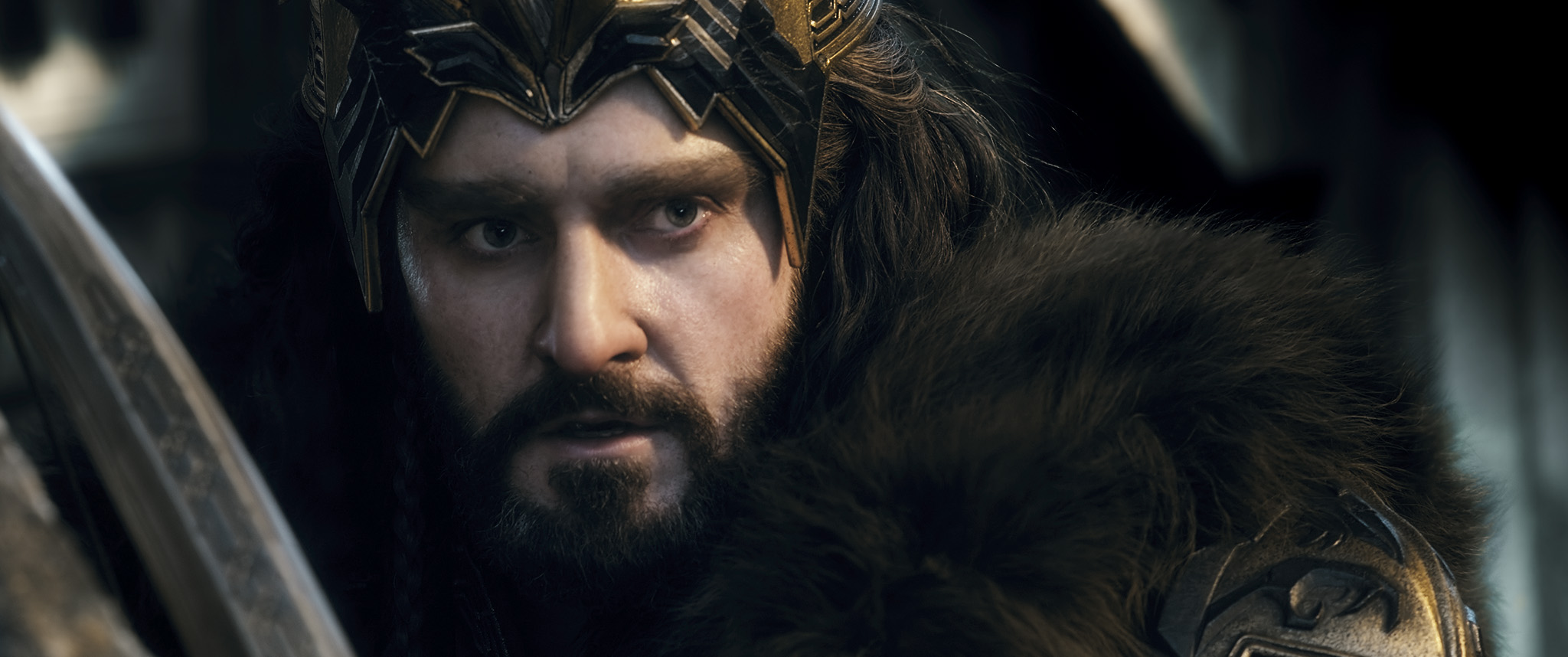
Richard Armitage’s performance as Thorin was the highlight of the film. Photo credit: Warner Bros. Pictures.
For me, the most enjoyable aspect of BOTFA was the performances, and moments where the characters had a chance to shine. There were many opportunities in this story to show the hearts of the characters, and the actors did not disappoint. Richard Armitage’s performance as Thorin was riveting. It was excruciating to watch Thorin’s madness twist everything he was into unrecognizable forms, and like sun after a storm when he came back to himself at last. The title of these films was The Hobbit, but Thorin was the story’s linchpin, and Armitage’s commanding performance gave the character depth and pathos well beyond the book version of the character.
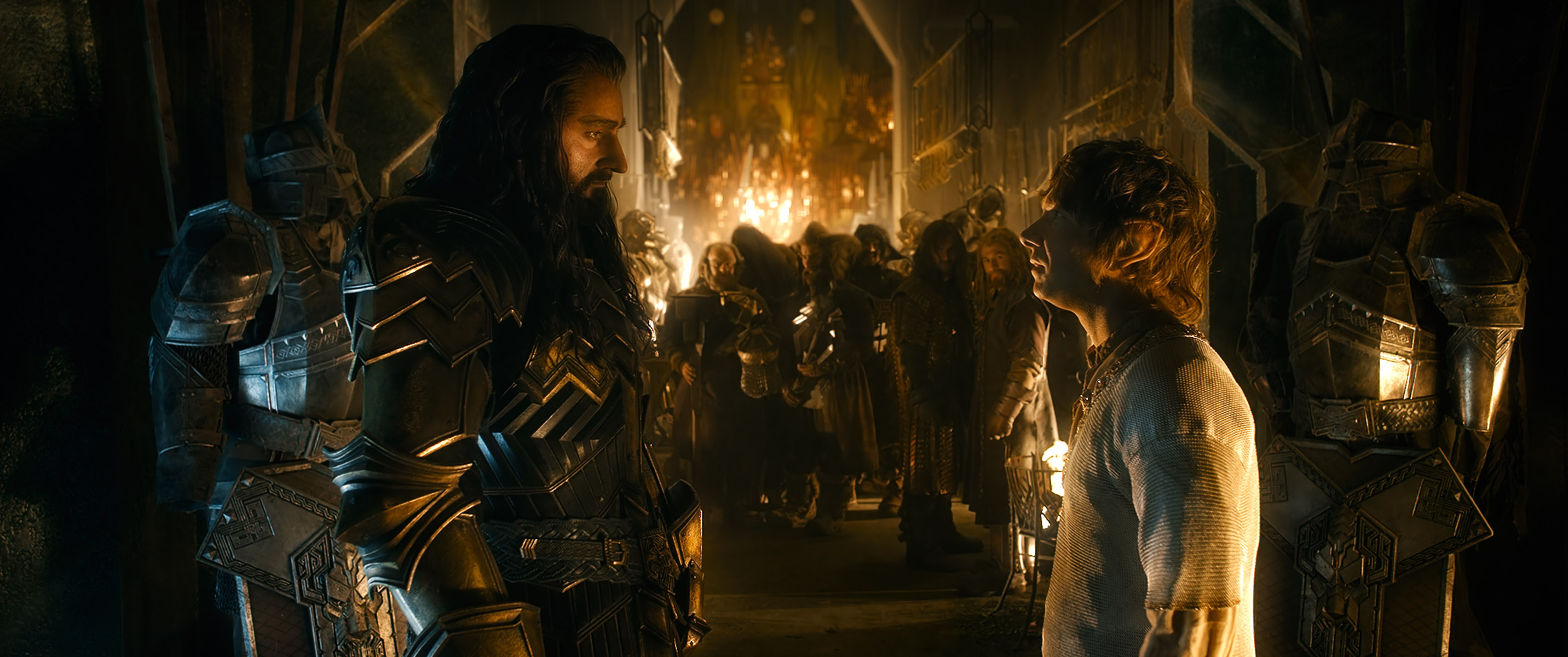
Martin Freeman as Bilbo Baggins brought a calm compassion to balance the smoldering madness of Richard Armitage’s Thorin. Photo credit: Warner Bros. Pictures.
I enjoyed Martin Freeman’s Bilbo as I have throughout all three films. There is a quality of earnestness in Freeman’s portrayal that gives Bilbo the exact right notes of strength, honesty, and courage. Luke Evans as Bard was among the most interesting characters to watch in this film. We saw Bard step into the role of dragonslayer, then leader, standing as the lone voice of peace and reason among the three main players in the the political game. Bard was the one who had his priorities straight: family, community, people, and peace before power.
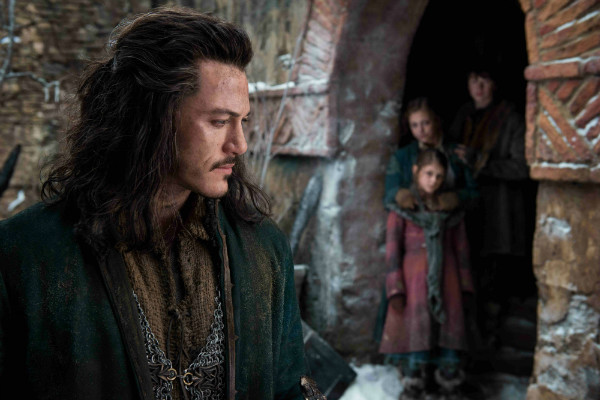
Bard (Luke Evans) was an excellent representative of humanity, with his priorities firmly set on family, people, and life over power and wealth. Photo credit: Warner Bros. Pictures.
Lee Pace was also a standout as Thranduil, the Elven-king who seems more than prepared to annihilate the Dwarves of Erebor and spend the lives of his own army for purely personal, emotional motives. The mix of Elven skill and wisdom with equal parts arrogance and haughtiness made Pace’s performance compelling. Who would ever think that we would witness an elf roll his eyes at Gandalf’s warnings? I felt the other supporting performances were solid as well, as much as they could be with what they had to work with. My favorite scenes in the film were the simple moments between characters: Thorin and Bilbo and the acorn, Thorin and Dwalin in the throne room, and Thorin’s death. I was also completely delighted with how the film—and the entire saga—ended. Bringing us back to old Bilbo at the moment Gandalf arrives for the Long Expected Party was immensely satisfying.
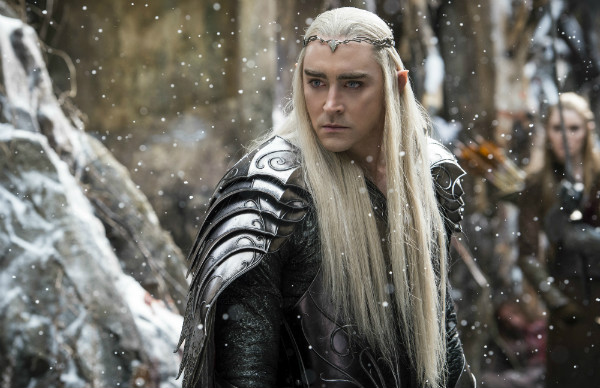
Thranduil (Lee Pace) was equal parts Elven grace and cold arrogance, with impeccable taste in armor and weaponry. Photo credit: Warner Bros. Pictures.
In addition to those character-centered moments, there were two sequences in the film that I found positively gobsmacking. The destruction of Lake-town and Bard’s slaying of Smaug were magnificent. The scene did a wonderful balancing act between the huge and terrifying scale of the dragon and his destruction and the tight focus of Bard who just wanted to keep his children safe. Even though Bard is descended from the Lords of Dale, his portrayal in The Hobbit films is a nice play on the very Tolkienian idea that heroes are found in the most unlikely places.
I also loved the White Council’s attack on Sauron in Dol Guldur. Galadriel has always been one of my absolute favorite Tolkien characters, and I relished the opportunity to see her unleashed. This episode was a wonderful lesson in why it would be a very bad thing indeed for Galadriel to gain possession of the One Ring.
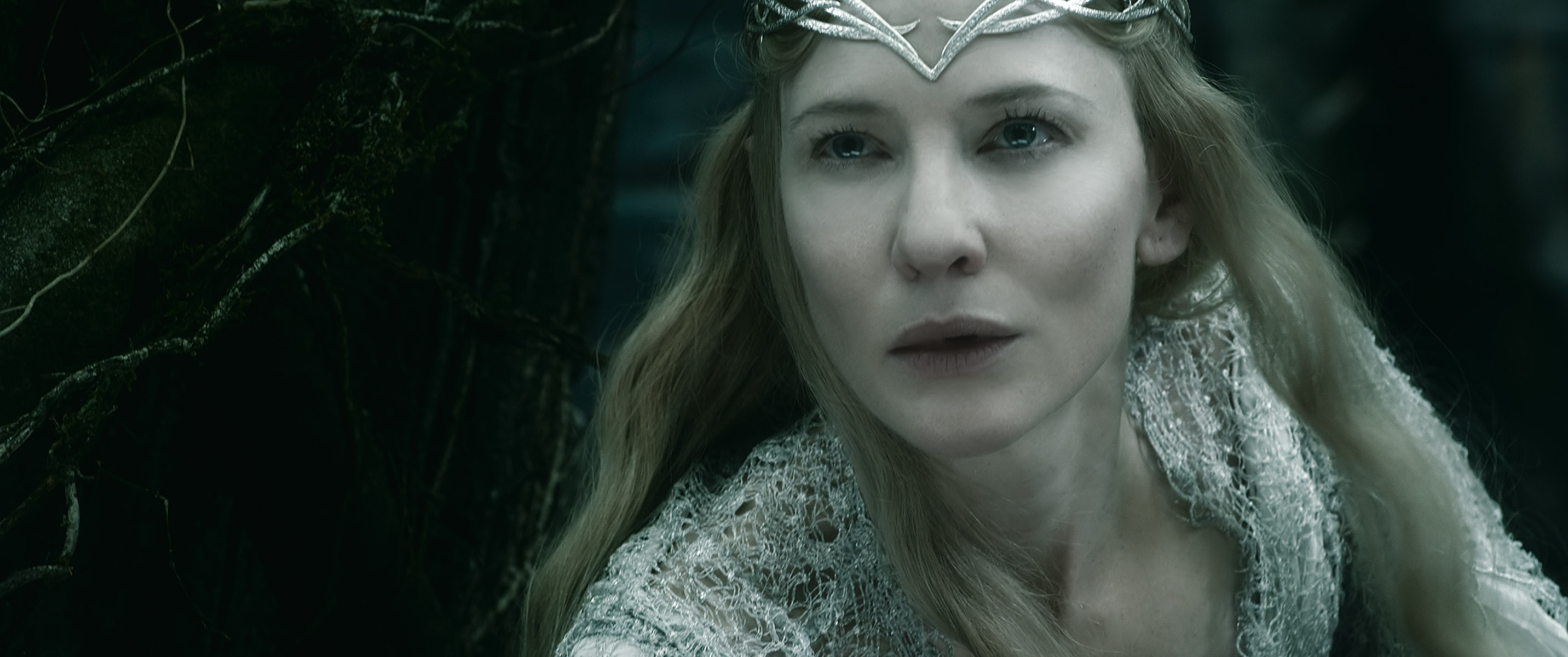
I loved seeing Galadriel (Cate Blanchett) in action in Dol Guldur. Photo credit: Warner Bros. Pictures.
Now I must deal with those aspects of the film that I didn’t much like. My biggest complaint is that viewers should not have to wait until the Extended Edition to see important story elements and resolutions for characters that we have followed for three films. I feel horrendously cheated that we did not see Thorin, Fili, and Kili’s funeral. It was painful to leave him lying on the ice, even surrounded by his comrades. We have no clue about the final whereabouts of the Arkenstone. The last time we saw it, it was in Bard’s pocket! We have no idea that Dain became King Under the Mountain and skillfully defused all of the pending disagreements between Dwarves, Men, and Elves. We may guess that Bard becomes the leader of the Lake-town refugees, but it’s just a guess. We don’t even get to hear Bilbo named Elf-friend by Thranduil. Instead, we get a completely gratuitous and incongruous Aragorn reference. The only resolution is for Legolas and Thranduil. We did get to see Bilbo’s safe return in the midst of the auction of his property, but we left younger Bilbo in an empty, disheveled, forlorn Bag End, peering somewhat ominously at the Ring.

I wonder if Bard is thinking, “Why are all these elves here?” That is certainly what I wondered many times in BOTFA. Photo credit: Warner Bros. Pictures.
Let’s return to the subject of Elves. I’d like to point out that there were far too many of them in this film! They were everywhere, taking over the story. This story should be about a hobbit and thirteen dwarves. The Elves play an important but secondary role. I never had a problem with Tauriel–I happen to like the character quite a lot, in fact. I also don’t object to the appearance of Legolas in The Hobbit. It makes sense that he should be around the Woodland Realm, even if he isn’t mentioned in the book, and it makes sense that he should be in his father’s army when Thranduil marches against Erebor. But the degree to which Legolas was featured in BOTFA was taking things too far. Way too far. So, we had lots and lots of Legolas doing physics-defying feats of Elven prowess, but eight dwarves who were entirely mute and nearly invisible, and our titular hobbit who was too often nowhere to be seen.
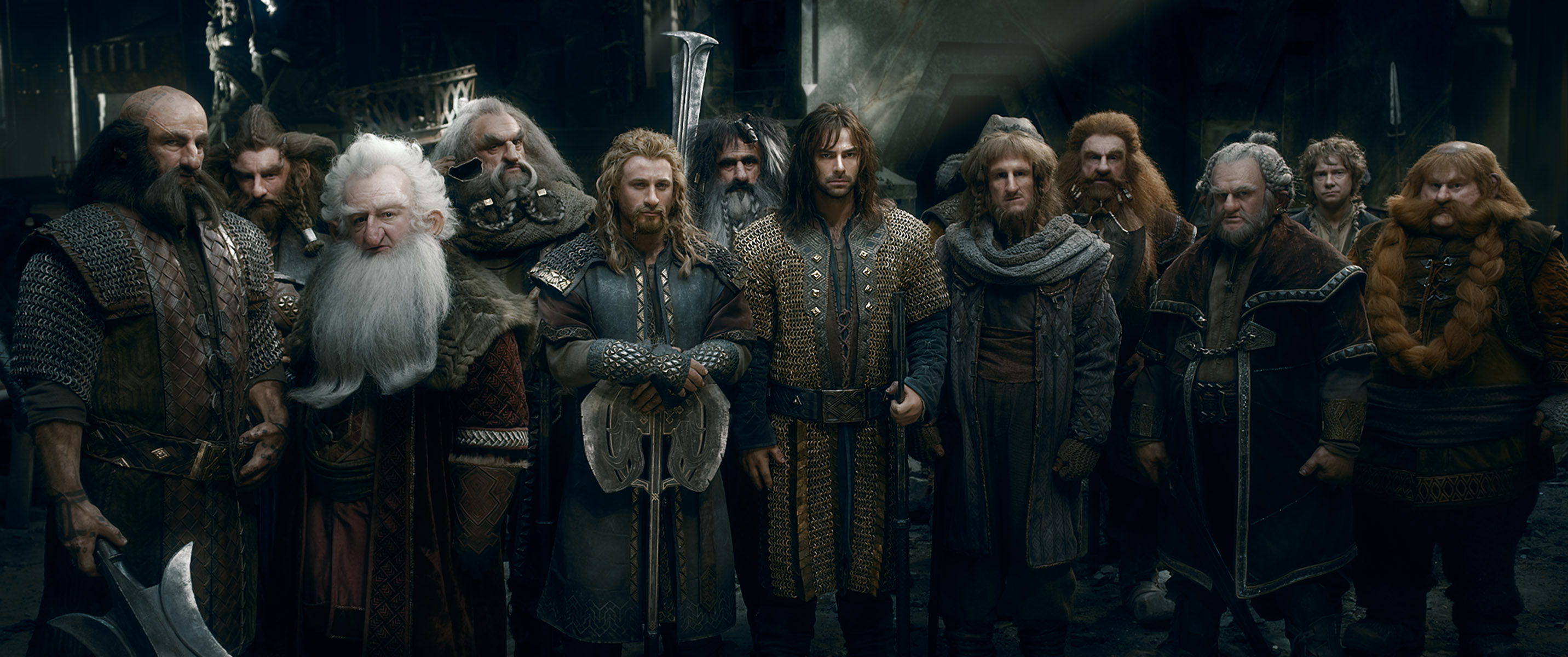
The film had an overabundance of elves, but not nearly enough of these fine dwarves. Photo credit: Warner Bros. Pictures.
Another completely baffling choice, in my opinion, is the use of Alfrid as what I guess was supposed to be comic relief. Ryan Gage did a lovely job, but the character quickly became annoying and tedious and just plain distracting. I can’t help but think, “I had to watch Alfrid in a dress, but I wasn’t allowed to see Thorin’s funeral.” I sincerely hope that the Extended Edition does not include more Alfrid scenes.
In the end, I liked the things that I liked more than I disliked the things that I didn’t like. As much as it pains me to say it, The Hobbit: The Battle of the Five Armies was not the film that I hoped it would be. It could have been so much more than it was, in the end. It could have really been “The Defining Chapter.” I remain a fan of Sir Peter Jackson’s Middle-earth films, and am forever grateful to him and his creative team for bringing Middle-earth to the screen. And, like many other fans, I am waiting for the Extended Edition of BOTFA, in hopes that some of my complaints will be addressed. Please, please, pretty please, show the funeral.

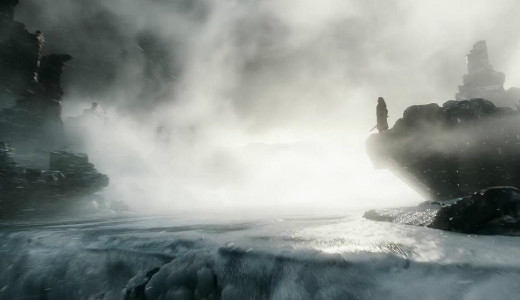
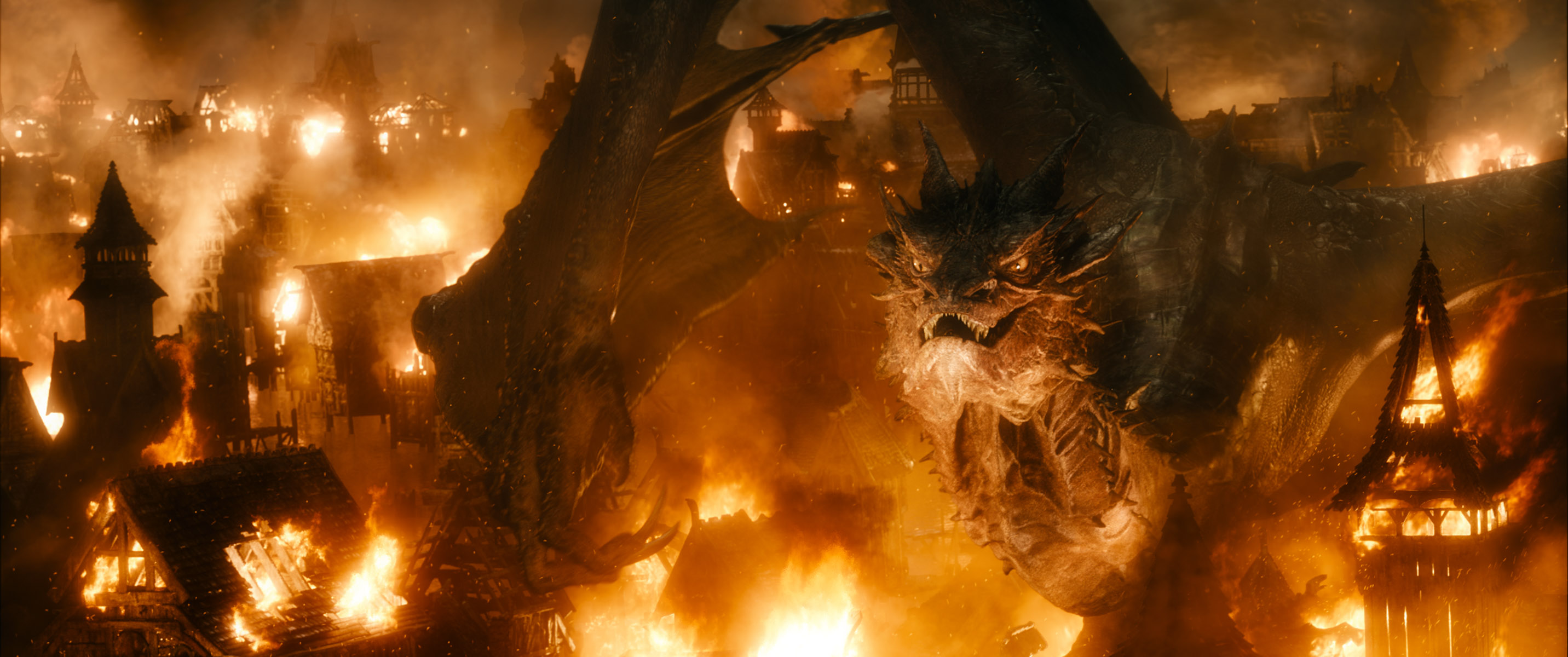


3 Comments